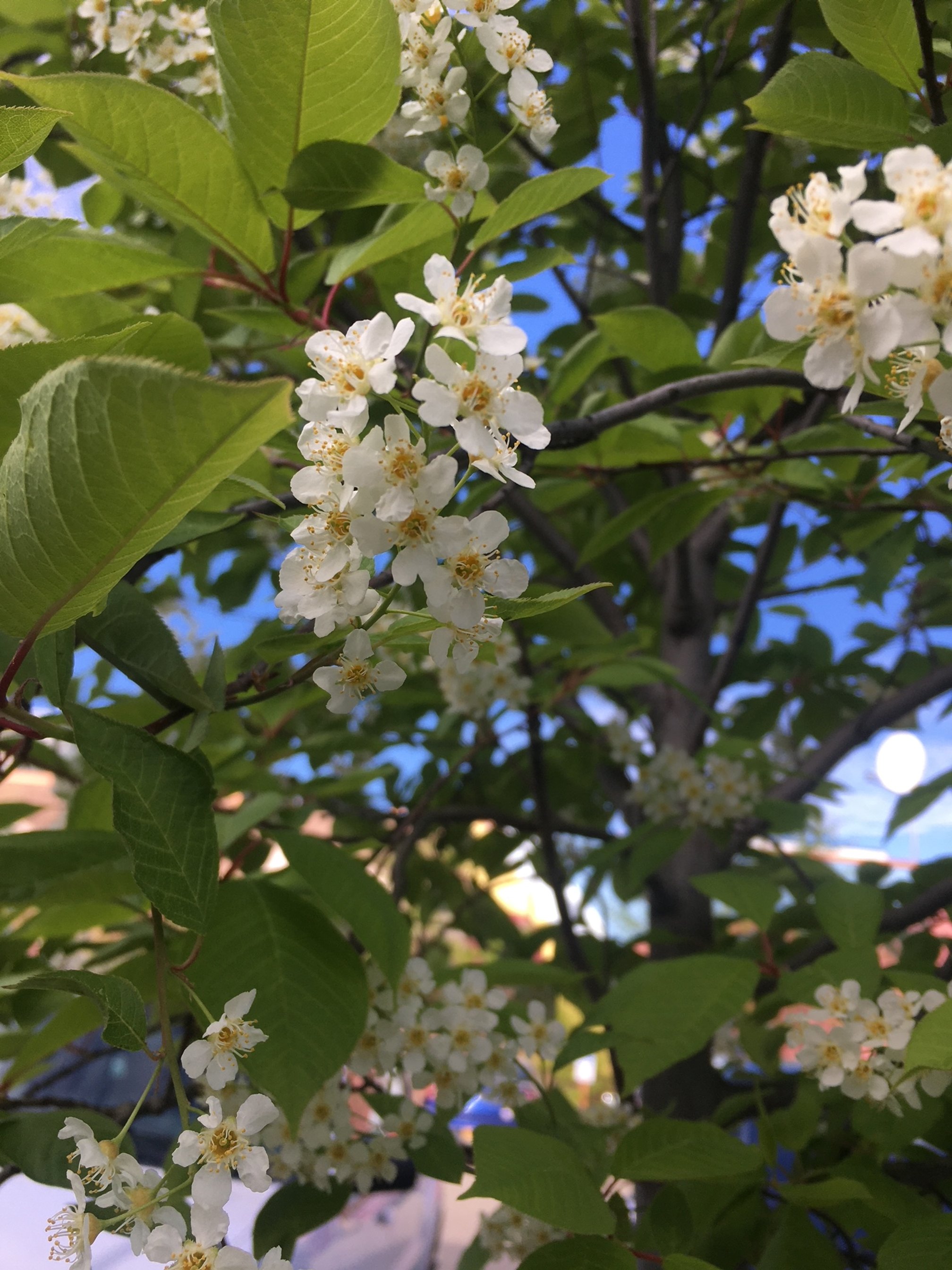Chokecherry, European bird cherry
Prunus padus
Chokecherry and European bird cherry have been planted as ornamental trees or shrubs on parks and private lands throughout the state. However, they quickly spread out to form dense thickets on forest edges and alongside streams.
These species can grow up to 35 feet tall and are cold resilient, having been found thriving north of the Arctic Circle. They alter forest habitats when they spread into the understory and displace native vegetation. They can also be toxic to large mammals such as moose and may pose a threat to rearing habitat for juvenile freshwater fish.
Identification
There are a number of distinct features of Chokecherry and European bird cherry that you may notice during summertime in Alaska. Between late May and early June, look for small white flowers that are arranged in drooping clusters. The black cherries start to ripen in the late summer. Look for pores on its smooth, grey or brown bark as well as its sharply serrated leaves. In early summer Chokecherry leaves turn red, while European bird cherry leaves remain green. In fruit, European bird cherry stones are wrinkled whereas Chokecherry fruit stones are smooth.
Invasive Prunus in Alaska
Both tree species have been documented in Anchorage and in the interior boreal forests of Fairbanks. They prefer disturbed open-canopy habitats, such as post fire areas. Chokecherry and European bird cherry trees are winter hardy and can withstand temperatures below -40 C.
Invasiveness
Both Chokecherry and European bird cherry rank high (74) on the invasiveness potential risk assessment conducted by the Alaska Center for Conservation Science. Both species are aggressive invaders and can produce up to 1,000 seeds per square meter. In addition, Chokecherry has the advantage to rapidly reproduce vegetatively once established. Fruits and flowers are attractive to both wildlife and humans, which facilitates their rapid spread and taker over of extensive native ecosystems.
Control methods
Young saplings of Chokecherry and European bird cherry can be controlled by digging plants out. However, mature trees are difficult to control without the use of herbicides. There are a handful of approaches with herbicide, each of which should be well planned to avoid damage to non target species. As always, read and follow the label instructions with any herbicide.





